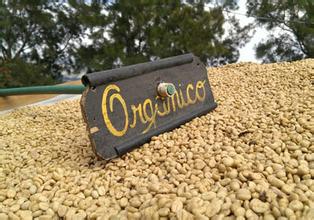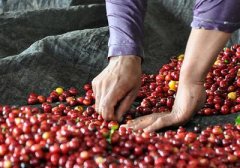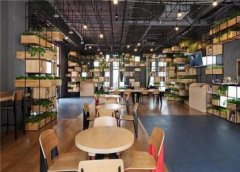A brief introduction to the planting of soft and smooth Hawaiian boutique coffee beans, geographical location, climate and altitude

Because it grows on volcanoes and has high-density artificial farming, each bean can be said to be a spoiled "lady". The beautiful, plump and baby-like Kona coffee has been planted at home. At first, only men were allowed to work in the coffee garden, and later women joined in. This kind of family production of Hawaiians preferred to rely on the efforts of their families rather than hiring workers to work, so it was normal for Hawaiians to have eight or nine children at that time. Since then, new immigrants from the Philippines, the United States and Europe have come to Hawaii to engage in the coffee industry. Over time, Hawaii has formed a social atmosphere that centers on family culture and is easy to absorb foreign cultures. and make it a major feature of Hawaii.
Hawaii is also a paradise for tasting and buying coffee. Each island has several unique places for tourists and local residents to taste and buy coffee, including comfortable and warm shops and comprehensive centers to introduce coffee knowledge. The real Hawaiian Kona coffee makes people enjoy the unique pleasure and leads you slowly into the detached state of tasting coffee. And this comes entirely from the oldest Arabica coffee tree.
Hawaii is the only state in the United States that grows coffee, which is grown on the five major islands of the Hawaiian Islands: Oahu, Hawaii, Maui, Kauai and Moroca. Coffee from different islands also has its own characteristics. Kauai coffee is soft and smooth, Muroca coffee is high in mellow and low acidity, and Maui coffee is moderately acidic but has the strongest flavor. Hawaiians are extremely proud of the Arabica coffee beans they grow 100% home-grown.
Hawaii is the largest island in the Hawaiian islands, so it is also known as the theBigIsland. Kona coffee is produced in the west and south of the Kona region of Hawaii. Coffee trees are scattered on the slopes of Hualalai and MaunaLoa, which is 150m ~ 750m above sea level, which is suitable for coffee growth
In Hawaii, you can watch the fiery sunset sink into the red-orange sea, feel the fresh air filled with the scent of flowers, and sit by the sea and drink a cup of Kona coffee. I'm afraid there is no place in the world that can offer you such enjoyment.
The earliest settlers in Hawaii arrived here between 300 and 400 AD, and historians speculated that they were from the Marcos Islands. People are scattered into different tribes that live on the island and are led by hereditary chiefs. The earliest Hawaiian residents created the rich musical culture of Hawaii, although not many words have been preserved.
Europeans discovered Hawaii by accident. They were looking for a legendary passage to the east where spices were produced, but they found the richest pearl in the Pacific Ocean. A captain named James Cook landed at Kauai in 1778 to resupply his ship. He encountered severe cold and storms on his way back, so he had to return to Hawaii at the beginning of the next year and anchor on a beach in Kona. Since then, the Hawaiian islands have become an important port of call on world trade voyages. The chiefs of Hawaii exchanged sandalwood, the island's specialty, for weapons, goods and livestock with passing ships. From the 1820s, Western religion began to spread widely on the island, and many churches built at that time are still in use today.
With the development of tourism in Hawaii, tourists can visit coffee farms, see or participate in various processes such as coffee harvest, coffee bean processing, baking and grinding, and make a cup of coffee that really belongs to them. In the Kona region, there are about 600 independent coffee farms, most of which are small family farms, usually between 18 and 42 acres. Kona Coffee earns more than $10 million a year for these coffee farms.
Kona coffee has always been grown at home. At first, only men were allowed to work in the coffee garden, and later women joined in. This kind of family production of Hawaiians preferred to rely on the efforts of their families rather than hiring workers to work, so it was normal for Hawaiians to have eight or nine children at that time. Since then, new immigrants from the Philippines, the United States and Europe have come to Hawaii to engage in the coffee industry. Over time, Hawaii has formed a social atmosphere that centers on family culture and is easy to absorb foreign cultures. and make it a major feature of Hawaii.
Kona coffee is grown on the slopes of Mauna Roa volcano on the southwest coast of Hawaii. In terms of flavor, Kona beans are closer to Central American coffee than Indonesian coffee. Its average quality is very high, carefully handled, medium texture, good sour taste, very rich flavor, and fresh Kona coffee is extremely fragrant. If you think your coffee is too thick, African coffee is too sour, Central and South American coffee is too rough, then "Kona" may be suitable for you. Kona is like a girl in the Hawaiian sunshine breeze, fresh and natural.
Kona coffee beans are average and neat in shape, with strong sour and sweet taste, moist and smooth taste. Because they grow on volcanoes and have high-density artificial farming, each bean can be said to be a spoiled "lady" with beautiful, plump and baby-like skin.
Although Hawaii is often affected by tornadoes, the climatic conditions are very suitable for the coffee industry. There is plenty of rain and sunshine, and there is no worry of frost. In addition, there is a strange natural phenomenon called "free shade". On most days, around 2 o'clock in the afternoon, white clouds appear in the sky, providing the necessary shade for the coffee trees. In fact, it is such superior natural conditions that make Arabica coffee in the Kona region produce more coffee than any other plantation in the world, and always maintain high quality, unique growth and climate environment to create a stronger coffee flavor.
But to the regret of coffee fans, only about 1400 hectares of coffee is produced. And because of Hawaii's high income and a large number of tourists, Kona coffee is so expensive that it is even sold as "kona blend" (no more than 5 per cent of Kona beans). Neighboring islands such as maui, kauai and molokai have also begun to grow coffee commercially.
Hawaiian Kona coffee beans have the most perfect appearance, its country is extremely full, and bright, is the most beautiful coffee beans in the world. The coffee is smooth and fragrant, with an attractive nutty flavor and a well-balanced acidity, as charming as the colorful colors of the island of Hawaii and a long finish.
The world-famous "Kona of Hawaii" is a mellow and sour coffee bean.
Kona coffee is grown on the slopes of Mauna Roa volcano on the southwest coast of Hawaii. In terms of flavor, Kona coffee beans are closer to Central American coffee than Indonesian coffee. Its average quality is very high, carefully handled, medium texture, good sour taste, very rich flavor, and fresh Kona coffee is extremely fragrant. If you think your coffee is too thick, African coffee is too sour, Central and South American coffee is too rough, then "Kona" may be suitable for you. Kona is like a girl in the Hawaiian sunshine breeze, fresh and natural.
Kona coffee beans are average and neat in shape, with strong sour and sweet taste, moist and smooth taste.
Important Notice :
前街咖啡 FrontStreet Coffee has moved to new addredd:
FrontStreet Coffee Address: 315,Donghua East Road,GuangZhou
Tel:020 38364473
- Prev

A brief introduction to the market price of wet and smooth Hawaiian boutique coffee beans
Although Hawaii is often affected by tornadoes, the climatic conditions are very suitable for the coffee industry. There is plenty of rain and sunshine, and there is no worry of frost. In addition, there is a strange natural phenomenon called free shade. On most days, around 2 o'clock in the afternoon, white clouds appear in the sky, providing the necessary shade for the coffee tree
- Next

A brief introduction to the treatment method of grinding degree and baking degree of Hawaiian boutique coffee beans with strong flavor
If you want to give the world's coffee beans beauty pageant, Kona coffee beans is undoubtedly the first place. The coffee made from Kona coffee beans has a strong flavor, with aromas of nuts and cinnamon, and moderate acidity, which makes it impossible to pick out shortcomings. The growing environment of coffee beans Kona coffee beans grow on a volcano in Hawaii, of course, not on the top, but on slopes.
Related
- Detailed explanation of Jadeite planting Land in Panamanian Jadeite Manor introduction to the grading system of Jadeite competitive bidding, Red bid, Green bid and Rose Summer
- Story of Coffee planting in Brenka region of Costa Rica Stonehenge Manor anaerobic heavy honey treatment of flavor mouth
- What's on the barrel of Blue Mountain Coffee beans?
- Can American coffee also pull flowers? How to use hot American style to pull out a good-looking pattern?
- Can you make a cold extract with coffee beans? What is the right proportion for cold-extracted coffee formula?
- Indonesian PWN Gold Mandrine Coffee Origin Features Flavor How to Chong? Mandolin coffee is American.
- A brief introduction to the flavor characteristics of Brazilian yellow bourbon coffee beans
- What is the effect of different water quality on the flavor of cold-extracted coffee? What kind of water is best for brewing coffee?
- Why do you think of Rose Summer whenever you mention Panamanian coffee?
- Introduction to the characteristics of authentic blue mountain coffee bean producing areas? What is the CIB Coffee Authority in Jamaica?

